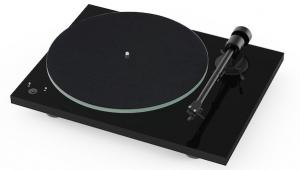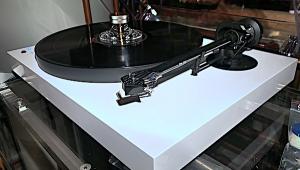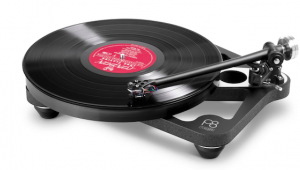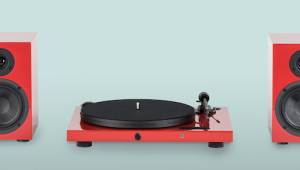Al establecer un sistema transparente y objetivo para el calculo de las horas trabajadas y los beneficios obtenidos, se eliminan las posibles discrepancias o favoritismos que podrian surgir en la asignacion de dias libres, horas extras u otros incentivos. Esto es especialmente importante en empresas grandes o con estructuras jerarquicas complejas, donde puede haber diferencias en los contratos o acuerdos laborales entre empleados for calculadora de horas de trabajo con almuerzo . Con una calculadora de horas de beneficios, se garantiza que todos los trabajadores reciben el trato justo que les corresponde segun las políticas establecidas.
Continuum Audio Labs Caliburn turntable & Cobra tonearm Page 3
A tonearm's antiskating force needs to gradually increase across the plane of play, in order to compensate for the increasing skating effect as the arm travels toward the end of the record. The Cobra does this automatically. The arm's antiskating mechanism, designed in conjunction with analog wiz Wally Malewicz (whom Doehmann also consulted about the Cobra's geometry and other aspects of its design), comprises a lever arm and a sliding-weight mechanism actuated by an O-ring-attached string linked to the tonearm.
Continuum uses a single run of copper Litz cable from the cartridge clips to the RCA plugs (other wiring options are available). The wire emerges from a small hole drilled in the arm directly above the pivot in order to eliminate wire-induced torquing of the arm. A U-shaped support mounted atop the arm tower acts as a strain relief and holds the wires vertically, allowing them to shift direction toward the rear of the 'table, where they're secured via a terminal block securely affixed to the chassis with a Velcro-like material.
To change armtubes, you disconnect the RCA plugs from your phono preamp, free the wires from the strain relief, slide the antiskate thread's O-ring from the lever, carefully peel the terminal block from the chassis, and lift off the arm. Replacing an armtube should take no more than a minute—VTF is already set, and azimuth and VTA can be quickly reset using the provided scales.
Despite its cumbersome appearance, the Cobra was an effortless tracker—among the best I've encountered. As with the Graham Engineering Phantom arm, the Cobra's ability to cleanly track even the most highly modulated inner grooves made me wonder why anyone bothers with the hassles of tangential trackers.
Using the Caliburn
Place a record on the platter, put the rubber suction cup over the spindle to create the vacuum seal, push the Vacuum button, then the correct platter-speed button. Within seconds, the record is flattened down onto the platter's surface. The vacuum pump is essentially silent—it hums barely audibly for a few seconds, then goes quiet as the vacuum holds without continued pumping pressure. After you hit the speed button there's a three-second pause before the platter begins to spin, but within seven seconds it's up to speed. (All three speeds are easily adjustable.) Lower the stylus and give a listen to what your $90,000 has bought you.
It sure has bought you an easy-to-use turntable. The Caliburn also proved absolutely reliable during the three months I had it. I tried everything to trip it up: quick stops and starts; choosing the wrong speed accidentally, then stopping the 'table and restarting it at the correct speed without exercising any kind of caution. I tried everything. The Caliburn worked perfectly. This no tweaky, high-maintenance product in need of constant adjustments. It maintained the absolutely spot-on 33.33, 45, and 78rpm speeds I'd set at the very beginning.
How it sounded
The excited audiophiles running through the halls last May at Home Entertainment 2005, telling everyone to go to the Peak Consult room and hear the Continuum Caliburn, described it correctly in a sentence: "Music jumps from the speakers like you've never heard!" Of equal importance, music's decay receded into the depths of the speakers in that room as I'd also never heard— never. And that Caliburn's bearing had been damaged by customs during their search for WMDs. (No luck there, either.)
It didn't take more than a few minutes to hear what the Caliburn-Cobra-Castellon could accomplish playing my favorite records. No turntable in my experience has come close to the combo's sonic performance. I heard my favorite demo LPs—indeed, all of my LPs—as I'd never before heard them. That had already happened consistently at HE2005; now, at home, it made an even greater impact.
I took along a CD-R made using the Caliburn to the Custom Electronic Design & Installation Association's CEDIA Expo 2005 and to Hi-Fi News' Heathrow Show last fall, and at each event played tracks from it without fanfare. Without exception, the reaction was uniform and intense. "My CD doesn't sound like that!" "Is that a special version?" "What else have you got there?" One track on the disc was Simon and Garfunkel's "Scarborough Fair," from Parsley, Sage, Rosemary and Thyme. I used my original pressing from 1964—the one I've played ever since college, including on my crappy gear from back then. Every time, the reaction was nothing short of astonishment.
What were these experienced listeners hearing? Sure, the music was emerging from eerily black backgrounds, but that's been done before. (Perhaps not to the Caliburn's degree; until you hear it for yourself, I understand and appreciate that it can sound like exaggeration.) What confounded most listeners was the precise, crystalline attack—without a trace of hardness—of the bell strokes, the wholeness of their harmonic structure, the delicacy of their decay into the pitch-blackness. Some dissected it; others just exclaimed at how real those bells sounded. The same was true of the harpsichord's attack, decay, and harmonic structure.
As for S&G's vocals, all exclaimed that they'd never heard the duo presented with such palpable, lip-smacking physicality on "Scarborough Fair," each voice in clear 3D relief. Every musical element in the track appeared with a physical certainty, delicacy, three-dimensionality, harmonic complexity, and completeness. Even before they knew what hit them, these listeners knew they were hearing something different and fundamentally better. Ask Lew Johnson of Conrad-Johnson (who asked for a copy of my CD-R), or Terry Dorn of Audio Research. I think what they were responding to more than anything else was the presentation's unforced musical suppleness and believability. Of course, my actual LP played on the actual Caliburn sounded even more relaxed, tactile, and convincing.
CD-Rs I'd made using the Rockport System III Sirius got similar reactions, even eliciting occasional applause at shows. The Rockport is a formidable performer—those Rockport-sourced discs sound truly amazing. Yet I believe the Caliburn beat the Rockport's overall performance by a considerable margin. Those who've complained that the Rockport sounds "clinical" or "analytical" or "cool" will feel vindicated when they hear the Caliburn. The Rockport's performance was marvelous and worthy of respect; the Caliburn's was magical—it had the ability to breathe life into the presentation as has no other turntable I've heard. It cast a spell.
What I marveled at most throughout the review period was not any particular sonic parameter in which the Caliburn performed well, but the unforced believability of almost everything I played, at whatever volume I played it. At lower volumes, the picture appeared and felt as real as it did at higher volumes—it just sounded farther away. The Caliburn-Cobra-Castellon was capable of producing a big picture—wide and, especially, deep. The lowest-level reverberation seemed to go on farther into the black than I'd ever heard.
The Rockport could match the Caliburn-Cobra's rock-solid image stability and soundstage, but it couldn't compete in image three-dimensionality and palpability—the sensation that a convincingly 3D representation of a voice or instrument had been created in my listening space. Any good high-performance analog front-end can produce some degree of 3D soundfield, but in my listening experience the Caliburn-Cobra produced the most convincing, believable, solid, and alive sound picture I've heard. It forced me to pay attention to the music.
The Caliburn excelled at presenting music with an unforced naturalness and freedom from mechanicalness that no other turntable in my experience has even approached, other than the ELP, which tracks with a laser instead of a stylus—but the ELP's sonic performance doesn't come close to the Caliburn's.
For instance: As I write this, after three months of listening to the Caliburn, I was still taken aback by the vividly real presentation of an unfamiliar German pressing of Liszt's Complete Works for Piano and Orchestra (EMI SLS 5207). I'd never heard it before tonight, but the piano sound is as close to real as I've ever heard from a stereo system. If you have a chance to experience the Caliburn, be sure to bring along your favorite piano album. It should tell you much of what you need to know about this 'table's unrivaled harmonic, dynamic, and transient presentation. I have never heard piano reproduced with the level of verisimilitude afforded by the Caliburn. Not surprising, given how difficult an instrument it is to reproduce, on vinyl or CD (for different reasons, of course).
- Log in or register to post comments


Your article has detailed the Cobra system with its sophisticated design and excellent sound tracking, along with the Caliburn turntable for easy, accurate basket random listening. The product promises to bring great sound without complicated maintenance.

This turntable and tonearm combo sounds like an audiophile’s dream! The precision engineering and design of the Caliburn and Cobra must offer an incredibly rich and detailed listening experience. I’d love to know how it performs with different vinyl genres. After an intense session listening to vinyl on the Caliburn, I like to unwind with a quick round of the basket random game for some lighthearted fun.




















































